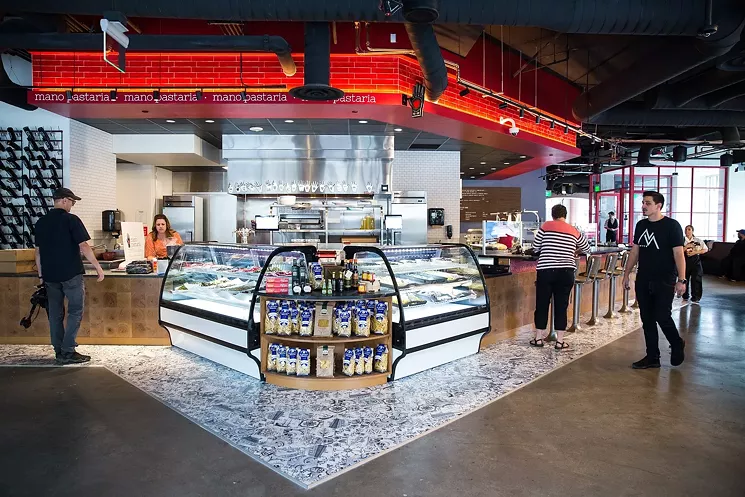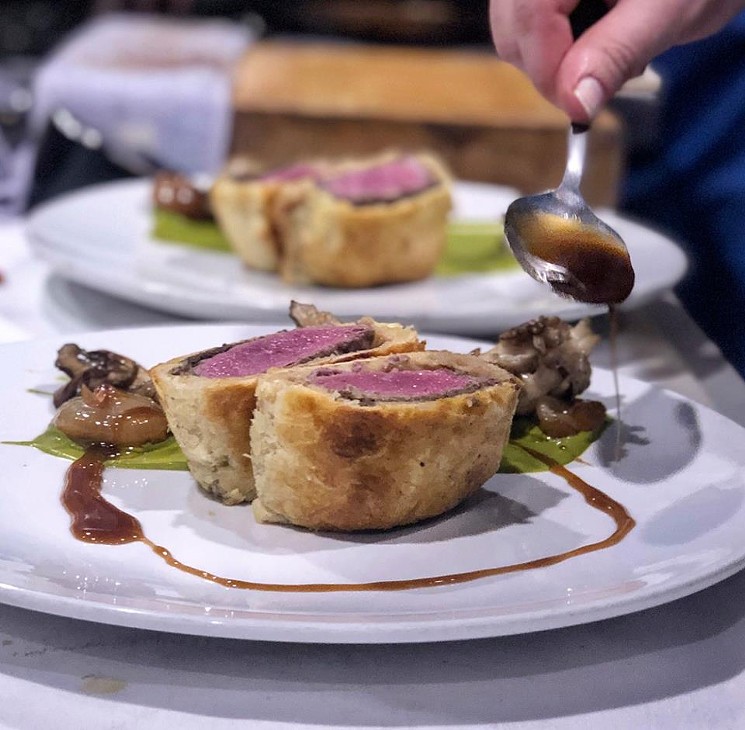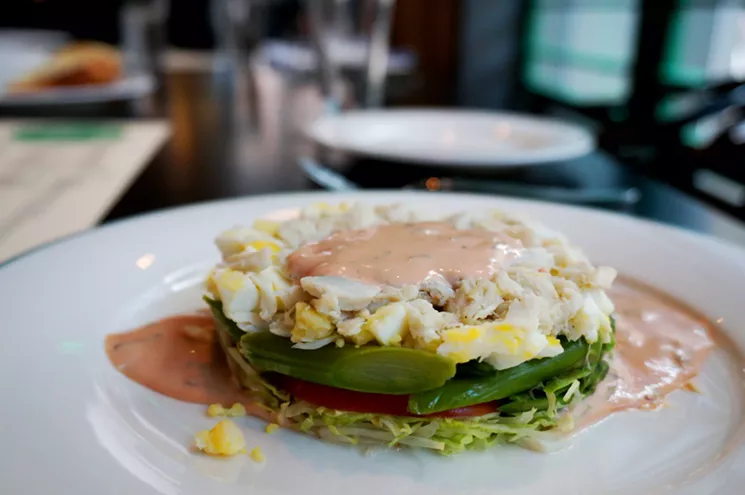After dealing with closed dining rooms, drastically decreased sales and laid-off employees, restaurants now face uncertainty in governmental rules for reopening, fearful customers, and the threat of a spike in COVID cases after their eateries are up and running agian.
As Bonanno and his wife and business partner, Jacqueline, prepare to reopen their flagship restaurant, Mizuna, there are still many questions that have yet to be answered, including what day they can be back in business, the seating capacity that will be allowed under new regulations, and whether diners will come in. "It's all happening so fast and changing every day," Bonanno notes. But guidance from the Colorado Restaurant Association has proven helpful, he says, and he's also making plans based on his own assessment of the situation.
"We don't think this is a six-month thing," Bonanno explains. "Jacqueline and I think this is a two-year thing." And so they're preparing accordingly.
Here are some of the restaurateur's ideas for adapting his restaurants to a new way of doing business in the coming months and years:
Decreased Capacity
"Do you know something I don't?" Bonanno asks. "Because I haven't heard anything official." But he says he's heard both rumors and industry recommendations that dining-room capacity could be something like ten people per 500 square feet, including servers. For Mizuna, that will amount to about twenty guests. Milk Market, which packs about a dozen food and drink concepts under one roof, has been functioning more as a grocery store and market since the March 17 restaurant shutdown, and all of the tables and chairs were removed. Bonanno says he's not sure when he'll be able to put seating back in, so he's looking to stay flexible for the next few months in order to comply with regulations and recommendations.
Reduced Hours
Many people will continue to work remotely, even after the stay-at-home orders have been lifted, and Bonanno's restaurants will have to adjust their schedules based on their location. "We may open French 75 just for lunch," he says, because the restaurant is located in the heart of the downtown business district (at 717 17th Street) and relies heavily on the surrounding offices for its customer base. But there may not be many workers at those downtown offices, and those who are there may head straight home after work.
Shorter Dinner Seatings
"I think the two-and-a-half-hour dinner is done," Bonanno states. Guests may not want to linger in enclosed spaces, and he doesn't want to encourage that, anyway, before the threat of coronavirus is fully under control. So rather than the multi-course chef's dinners that were popular at Mizuna before the pandemic, he's looking at three-course dinners served in shorter time frames to keep customers feeling safe.
Comfort and Safety
"You want to spend your money on places you know are reliable and you know what you're getting," Bonanno says. So comfort — with the food, staff and safety of a restaurant — is important to customers. He's looking at adding booths at Mizuna and Luca, which will provide additional separation between parties and put guests more at ease while they're dining. Specific kinds of food are appealing to people looking for simplicity and comfort right now, too. For example, Lou's Food Bar and Salt & Grinder have both maintained their pre-pandemic business levels because the food is easy to take home and provides familiarity and immediate satisfaction.
Customers aren't the only people who are worried. "We want our servers to be safe," Bonanno notes. So in addition to taking staff temperatures every day and checking for symptoms, he plans on asking customers to sign a declaration of good health if they want to eat in his dining rooms. This is something that could become a normal occurrence at all restaurants, not just Bonanno's, as a way to make staffers feel safer and possibly provide legal protection for owners.
Revised Menus
The menus at Mizuna and the other sit-down restaurants under the Bonanno Concepts umbrella are likely to be much smaller, the chef explains, because kitchen crews will be smaller out of necessity. The kind of food served will lean toward things that small crews can execute well while maintaining adequate distance in the kitchen, rather than multiple cooks hovering over elaborate, multi-touch plates. "The high quality will still be there, though," Bonanno promises.

Milk Market has been functioning as a grocery store and takeout spot since March 17, when seating was removed.
Danielle Lirette
Even once in-restaurant dining is allowed, takeout and delivery will remain important. Bonanno says he's looking into purchasing vehicles and getting insurance to start doing delivery without having to rely on an expensive third-party company. That means his restaurants could actually offer fully plated dinners with china and silverware, then pick everything up the next morning.
His restaurants have gone through more takeout containers in the past two months than they have in the past several years combined, he notes, and ordering containers has been an issue. "We never get the same ones twice," he points out. "I'll find one that I really like, and the next time I order, it won't be available."
He'd also like to see the city turn off parking meters in areas with high restaurant density to allow for curbside pick-up and delivery zones.
Reduced Revenue
"We are really blessed with great landlords, and that's a partnership that has to exist," Bonanno explains. He thinks property owners all over town will have to understand that they can't keep rent as high for restaurants if they want to keep their spaces occupied at all.
Additionally, the service industry has gone almost instantly from a labor shortage to high unemployment, so wages are likely to be lower when front- and back-of-house employees return to work. But Bonanno thinks there can be equity in the situation as long as he can find ways to structure his restaurants to share tips between kitchen staff and servers. Some of this, though, is up to lawmakers, who haven't realized how much the tip credit and high minimum wages for tipped employees have aggravated the pay disparity, he suggests.
But before all that, the city and state will have to decide when restaurants can open, and how.
So Bonanno's snapshot of an extremely difficult time is filled with uncertainty. "Call me again in a week and I may have better answers," he concludes.














